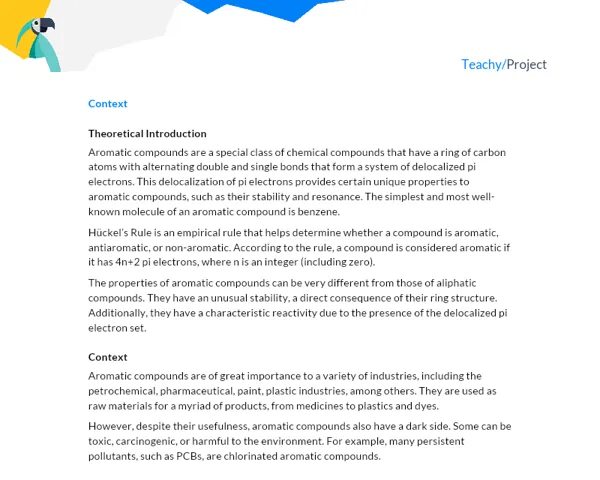Contextualization
Chemistry is a science that explores and explains the universe on a microscopic scale. One of the fundamental concepts in the study of Chemistry is the idea of dissociation and ionization. But you may be wondering, what are these phenomena and why are they useful to us?
Dissociation is the process by which ionic compounds, when in solution or molten state, separate into their constituent ions. On the other hand, ionization is the process of forming ions from neutral atoms or molecules, that is, there is a change in the amount of electrons in the atom or molecule, usually caused by the action of a magnetic field, radiation, or a chemical reaction.
But why is it important to understand these concepts? Dissociation and ionization are essential to understand many of the chemical reactions that shape our world.
For example, acids and bases are substances that can undergo ionization in aqueous solution, forming charged chemical species that participate in chemical reactions. In medicine, the principles of dissociation are used to understand the dynamics of drugs in the human body, as many of them are ionic compounds that need to dissociate to exert their pharmacological effects.
The industry also benefits from the knowledge of dissociation and ionization in the production of goods. For example, in the production of soaps and detergents, where understanding the dissociation of ionic compounds is crucial for the development of molecules that are effective in cleaning.
To delve deeper into the subject, we recommend the following resources:
- Book: "Chemistry: The Central Science", by Brown, LeMay, Bursten, Murphy, and Woodward, chapter 4.
- Article: "Water, Dissociation, and Ionic Equilibrium", published by Khan Academy.
- Video: "Dissociation and Ionization", produced by the Ciência em Ação channel on YouTube.
Practical Activity - "Dissociation and Ionization in Action"
Project Objective
Investigate the concepts of dissociation, ionization, and the difference between them through the analysis of different substances in solution.
Project Description
Groups of 3 to 5 students will analyze how different substances behave when dissolved in water. They will observe and record the changes, drawing conclusions about whether the substance underwent dissociation or ionization. Students also need to research and explain the relevance of dissociation and ionization in the real world, providing examples of the application of these phenomena.
Required Materials
To carry out this activity, each group will need the following items:
- Three different substances soluble in water (for example, table salt, sugar, and vinegar);
- Water;
- Three transparent cups;
- Mixing spoons;
- Multimeter or pH test strip (available at chemical supply stores or online).
Activity Steps
- Put some water in each of the three cups.
- Add a different substance to each cup and mix well.
- Record your initial observations about the appearance and smell of the solutions.
- Use the multimeter or pH test strip to measure the electrical conductivity and pH of each solution.
- Record the results and research to understand if the substances underwent dissociation or ionization based on what you learned in class and in your research.
- Research concrete examples of how dissociation and ionization are applied in the real world.
- Write a project report, following the guidelines below:
Project Deliverables
The group must submit a written report that includes the following sections:
-
Introduction: In this section, you should introduce the topic, explaining the concepts of dissociation and ionization. You should also mention the relevance of these concepts in the real world and the project's objective.
-
Development: Here, you should explain the theory behind dissociation and ionization, list the materials used, detail the procedure followed, and present the results obtained in the practical activity. Also include your interpretation of these results based on what you learned in class and in your research.
-
Conclusion: In this section, you should summarize the main points presented, comment on what you learned from the project, and draw conclusions from it.
-
Bibliography: List all the sources you used to support the project's development, including books, websites, videos, among others.
Remember: the report should be clear, complete, and well-developed, demonstrating the understanding and application of the concepts of dissociation and ionization and presenting examples of the application of these concepts in the real world.


